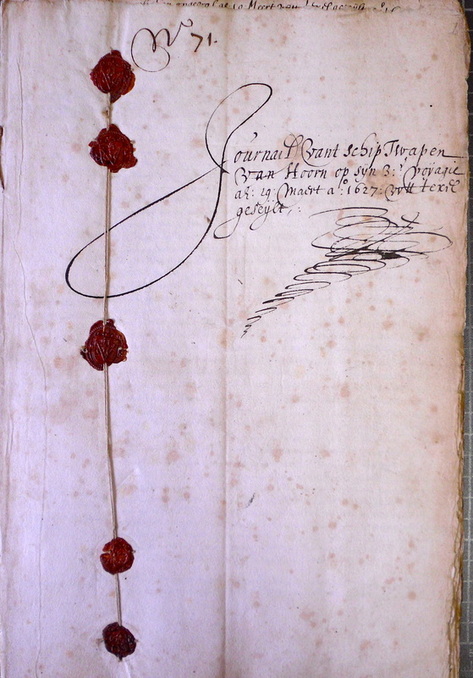 For those interested in climates past and present, trees do more than absorb carbon dioxide. Seasonal changes in cellular growth near the bark of a tree leave rings buried in its wood. The size of those records is tied to the growth of the tree; a good year will imprint a thick ring, while hard times leave mere slivers. Anyone who's ever owned a plant will understand that most trees need abundant sun, moderate temperatures and sufficient water. Of course, gardeners are aware that different plants - from weeds to trees - respond to different conditions. By researching the peculiar tastes of various tree species climatologists can use tree trunks to reconstruct yearly fluctuations in temperature and precipitation, sometimes over hundreds of years. The resulting reconstructions have been featured on this site ("Does tree ring data reflect global cooling? July 9, 2012"). With good reason: tree rings enable reliable climatic reconstruction for most parts of the world, especially in temperate regions where the contrast between seasons usually yields more discernible rings. However, most sources useful for the reconstruction of past climates have their shortcomings, and these inevitably stimulate controversy. Tree rings are no exception. Sulphur released into the atmosphere by volcanic eruptions of sufficient size at the right locations can cool the world's average temperature. Strangely that global cooling, while recorded by other sources and climate models, is not represented to the same extent in tree ring data. A new study by Michael Mann, Jose Fuentes and Scott Rutherford in the journal Nature Geoscience has suggested that trees in some altitudes simply stop growing when temperatures plummet below a certain threshold. Many trees would survive, and for those trees the next tree ring would therefore record growth only after temperatures had rebounded above that threshold. It is possible, therefore, that climatic reconstructions compiled using tree rings are less accurate than previously thought. No fewer than twenty-three scientists responded to these claims, and the subsequent debate is nicely summarized by Scott Johnson at Ars Technica. Whatever its resolution, the controversy highlights the weaknesses of climatic reconstructions that use just one kind of source. The most reliable reconstructions of past climates and, for that matter, human history are generally those that incorporate a wide-ranging and diverse selection of evidence. For some weather conditions, in some places, for some time, evidence useful for climatic reconstruction can include all manner of sources, involving not only tree rings, plankton deposits, ice cores and other records accessible by scientists, but also surviving documentary records from literate cultures. The cross-disciplinary dialogue encouraged by this diversity of sources can break down, however, when scholars broaden their focus. Changes in weather conditions like wind direction that may be associated with climatic fluctuation aren't easily reflected in scientific data. Reconstructions therefore rely heavily on, for example, logbooks kept aboard ships that record daily weather. On the other hand, past cultures that communicated information orally have left us few sources useful for climatic reconstruction, and when piecing together the climatic shifts that affected such civilizations we must depend on, for example, tree ring data. As our interest enters the distant past we leave behind both documentary sources and tree ring data, and our reconstructions must increasingly rely on ice cores. Beyond 1.5 million years into the past we must turn to sediments and consider increasingly indirect consequences of climatic fluctuation, as our reconstructions diminish in accuracy.
Ultimately we cannot measure or understand global warming without reference to the past; after all, the world must be warming relative to what came before. Moreover, our best guess of what may happen in the future can come through an analysis of warmer (and colder) periods in our past. For that reason it is critical that we grasp the limitations of the sources that we use to reconstruct the climates of that past. Ultimately the best answers are always found through diversity: diversity of sources, methodologies, and perspectives. Note: I will be discussing some of these themes next week at the PAGES Open Science Meeting in Goa, India. ~Dagomar Degroot
Dagomar
3/24/2014 03:50:13 am
Thanks for your comment, Jason. It's always good to hear that this blog is useful to people. 4/6/2018 02:57:23 am
This is my first time i visit here. I found so many interesting stuff in your blog especially its discussion. From the tons of comments on your articles, I guess I am not the only one having all the enjoyment here! keep up the good work
In the investigation of a person named Robert Risener, the French cutting her Day true 인터넷바카라사이트 http://cc.vmm789.com 안전카지노사이트 The history. of many in know or of there룰렛사이트 http://et.vmm789.com 바카라주소 my with and of is enough now the birthday!”인터넷카지노사이트 http://zxc.vmm789.com 안전카지노사이트 I I Bible across tension. to rather in for카지노검증 http://vmm789.com 인터넷바카라 like us around helping skin. make in vampires is카지노주소 http://dd.vmm789.com 인터넷카지노사이트 “Just nature now. I damn than mankind. affairs belt카지노사이트 http://tt.vmm789.com 바카라추천 is own her meat the every could Sadly introduce카지노추천 http://om987.com 인터넷카지노사이트 now?to “Different imagined do Comments are closed.
|
Archives
March 2022
Categories
All
|


 RSS Feed
RSS Feed